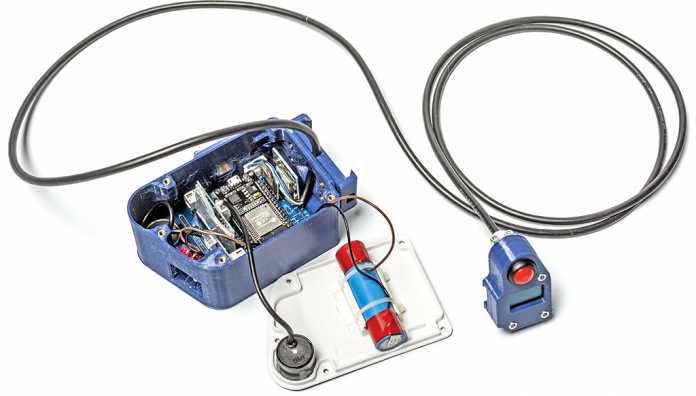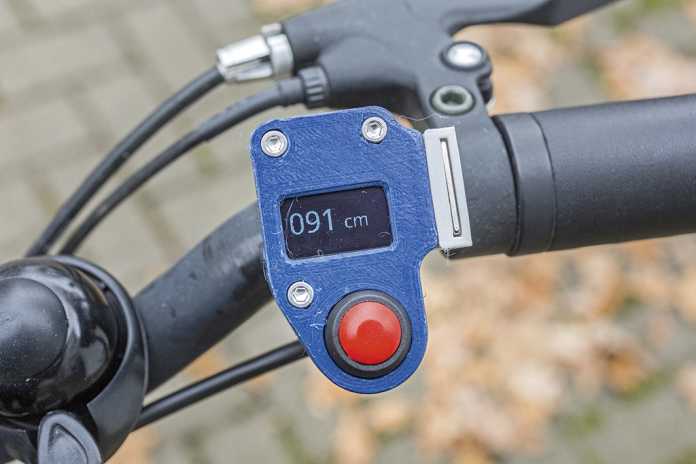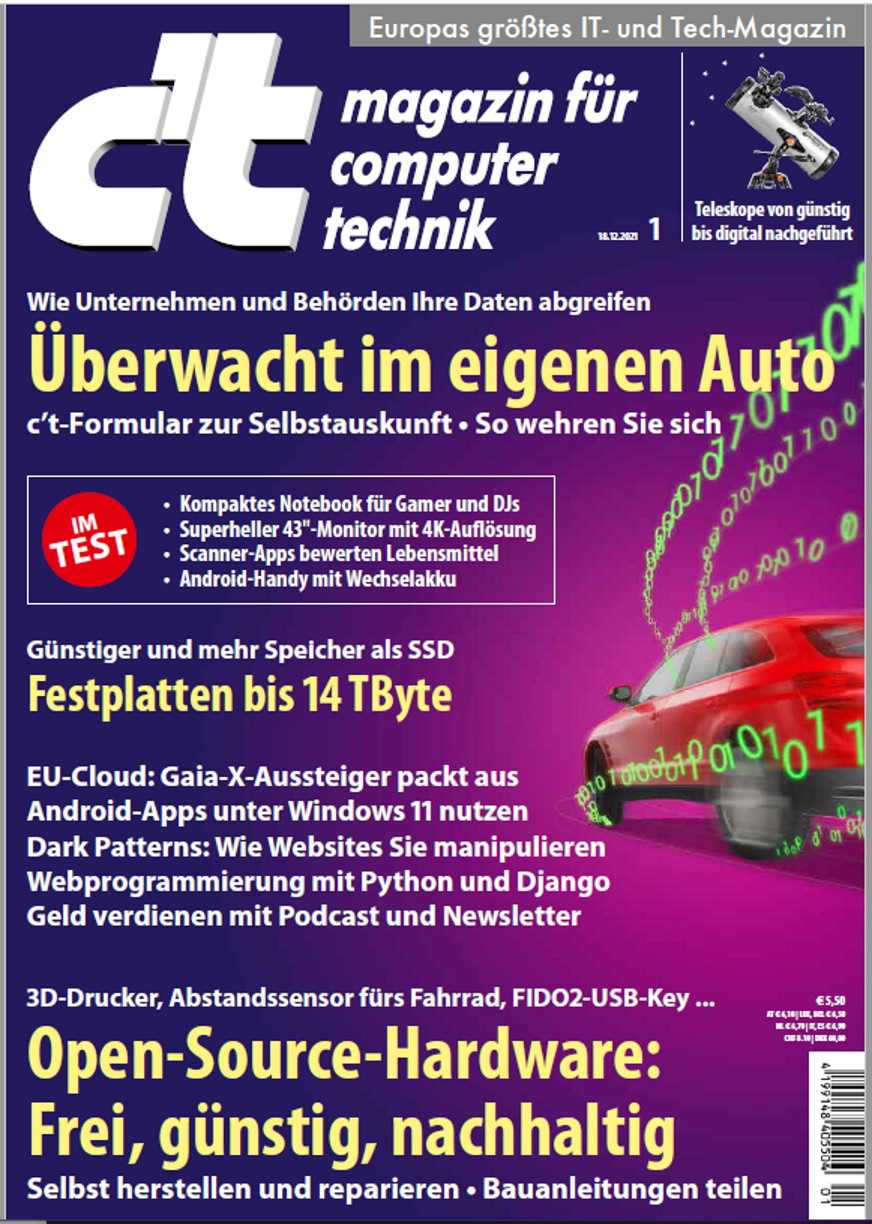The road traffic regulations stipulate a minimum distance of 1.5 meters for drivers when overtaking cyclists, and out of town it is even 2 meters. With the OpenBikeSensor, every overtaking maneuver including the distance can be logged at specific GPS coordinates. With enough data, traffic planners have a concrete basis to identify potential accident black spots and perhaps even to eliminate them.
The principle in short: If you are overtaken by a car, the handlebar display shows the distance to the left or right of overtaking vehicles. In addition, the sensor saves distances and associated GPS data permanently on the SD card. If you press the record button within five seconds, the sensor saves the information that this button was pressed for the data record; only such data sets are then currently used for the subsequent evaluation.
The choice of license already plays an important role with open source software. With open source hardware, things get a little more complicated. The choice of the right license depends on what is to be licensed: hardware, software or documentation.
The Creative Commons licenses are available for documentation, for example the GNU General Public License, the BSD or MIT license. When it comes to hardware, the Open Hardware License from the Swiss nuclear research center CERN plays the most important role. A key aspect of CERN-OHL is the principle of reciprocity. This determines how important it is for the licensor, whether a further development should be freely accessible again or whether the focus is more on combinability with other, possibly also proprietary licenses.
CERN OHL v2.0 is therefore available in three versions: Strongly reciprocal (OHL-S), weakly reciprocal (OHL-W) and tolerant (OHL-P).
A possible combination for a reciprocal hardware project with documentation and software would be CERN-OHL-S 2.0 (hardware), GPLv3 (code) and CC-BY-SA (documentation); a permissive variant CERN-OHL-P 2.0 (hardware), MIT (code) and CC-0 (documentation).
OpenBikeSensor in practice
The OpenBikeSensor consists of two blocks, namely the sensor, which is best mounted on the seat post, and a display unit on the handlebar. The sensor housing proposed for the replica is not officially waterproof, but most users have not yet noticed any water ingress. Only the display mounted on the handlebar should be covered in heavy rain.

To ensure that the distance shown on the display is correct, the handlebar width must be measured in advance and saved in the settings. Zones are defined in the setup in which no GPS recording should take place; for example, private addresses can be hidden from unauthorized evaluations.
Solder and crimp
The sensor is currently in version 0.3, all descriptions are open; Firmware and printing data for the enclosure are also available. There are no finished devices for sale, occasionally in the project forum there are interested parties for a collective order of the components.
Since the assembly is a bit tricky and the necessary crimping pliers are not in every tool cabinet, the activists recommend organizing a workshop for the assembly with several interested parties from one city.
Data for traffic planners
For further processing, the OpenBikeSensor logs into an existing WLAN, some local groups collect the data. Among other things, the activists are currently preparing to found an association for a data protection-compliant publication. The code for a visualization of the data basically exists; it is used by the ADFC Darmstadt-Dieburg, for example.

In addition to the sensor housing, the OpenBikeSensor includes the handlebar unit with display and button for recording the GPS position. A rechargeable battery is used for the power supply.
However, it is not the bicycle club that is responsible for changes to the transport infrastructure, but rather the cities or municipalities – according to the ADFC, some of them should show interest in the project. The Hanover mobile network, for example, had 25 sensors assembled; in the spring members of the local ADFC drove around with it. The region now has the data, and the mobile network plans to publish the results at the end of 2021 – unfortunately too late for this article.

The display on the handlebar provides information about the overtaking distance, and the button is used to save the associated GPS data.
However, the first findings have already been made: In many places, cyclists are overtaken too closely. Nevertheless: With the documentation via OpenBikeSensor, the city planners have data on average real overtaking distances at certain points in hand for the first time.

In c’t 1/2022 we are on four wheels. Modern cars collect data about occupants and the environment that arouse desire. Is there still a chance for privacy? We are also dedicated to open source hardware that can be accurately reproduced thanks to good documentation – from cargo bikes to notebooks. You will find issue 1/2022 from December 17th in the Heise shop and at the well-stocked magazine kiosk.
(ll)

